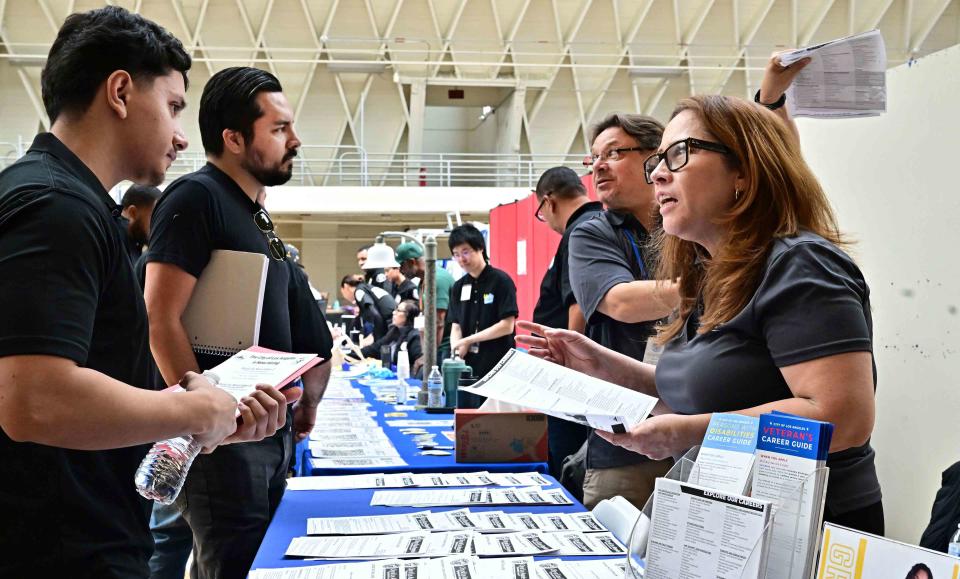US Unemployment Rate Rises to Highest Level Since 2021

Frederic J. Brown / AFP / Getty Images
Key Takeaways
The U.S. unemployment rate unexpectedly rose to 4.3% in July, a steep enough increase to set off a historically reliable recession indicator.
Employers also added fewer jobs than expected, just 114,000 compared to the 185,000 forecasters had anticipated.
The Federal Reserve is widely expected to cut its benchmark interest rate in September in an effort to prevent the job slowdown from becoming a full-blown recession.
The job market took a sharp and surprising turn for the worse in July, with the unemployment rate rising to its highest in nearly three years and hiring slowing down significantly.
The unemployment rate rose to 4.3% from 4.1% in June, its highest since October 2021, the Bureau of Labor Statistics said Friday. Forecasters had expected it to stay flat, according to a survey of economists by Dow Jones Newswires and The Wall Street Journal. Employers also added far fewer jobs than expected: just 114,000 compared to the median forecast for 185,000, and down from June's downwardly revised figure of 179,000.

While the unemployment rate wasn't high by historical standards, it has now gone up steeply enough over the past year to set off a recession indicator called the Sahm Rule. Named after economist Claudia Sahm, the rule is an early warning that job losses could snowball into a recession.
High Interest Rates Weigh on Economy
Officials at the Federal Reserve have held the central bank's benchmark interest rate at a 23-year high since last July in an effort to slow the economy and stifle inflation. Fed officials are widely expected to cut those rates starting in September, as concerns mount that high interest rates could lead to an economic slowdown and further job losses.
"The labor market data out this morning suggests the Fed has waited too long to lower interest rates," Elise Gould, a senior economist at the Economic Policy Institute, posted on X, the social media platform formerly called Twitter.
'Flags are Turning Red' in Labor Market
Some of the rise in unemployment over the last year has come from more people joining the workforce, looking for jobs, and not finding them, rather than a wave of mass layoffs. And some of the weakness could represent temporary disruptions from Hurricane Beryl, which hit Texas in early July.
Still, the report added to evidence that the job market, formerly one of the bright spots in the economy, has dimmed.
"Yellow flags had started to pop up in the labor market data over the past few months, but now the flags are turning red," Nick Bunker, economic research director for North America for the hiring lab of job search site Indeed wrote in a commentary. "The rise in the unemployment rate cannot be ignored as job gains have weakened and become less common."
UPDATE: This article has been updated with a chart showing unemployment rates over time and comments from an economist.
Read the original article on Investopedia.